Panel throws up hands over new state seal after three-year effort
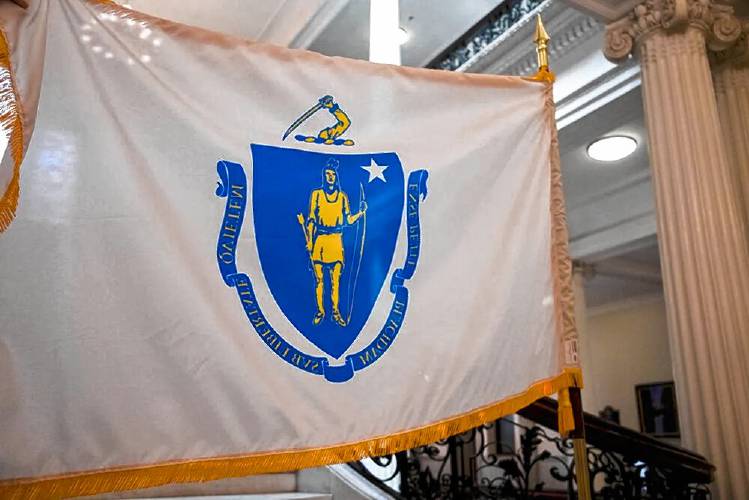
State law calls for the seal to include “a blue shield with an Indian thereon, dressed in a shirt, leggings and moccasins, holding in his right hand a bow, and in his left an arrow, pointed downward, all of gold.” STATE HOUSE NEWS SERVICE
| Published: 11-20-2023 3:46 PM |
BOSTON — Nearly three years after the Legislature tasked a panel with recommending changes to the state seal and motto, the group is disbanding and asking to shift its unfinished work onto Secretary of State William Galvin’s office.
The State Seal Commission’s recent report features a to-do list of uncompleted action items, such as actually picking new symbols for the seal and words for the motto — matters that were discussed at length during the commission’s meetings over the past couple of years.
For centuries, the seal has portrayed an Indigenous person on a shield. The crest above it, which is also the state’s military crest, features an arm holding a sword. The motto is roughly translated from Latin as “By the sword we seek peace, but peace only under liberty.”
Future action on the commission’s ideas to modify the seal would need to be pursued through legislation, which would fall under the State Administration Committee. Sen. Nick Collins, co-chair of the committee, voted against the panel’s report.
“The commission was tasked with taking a look at the motto and the seal. And then it took on a life of its own,” the South Boston Democrat told State House News Service. He added, “There are parts of the flag and the seal that people have taken offense to, and I can understand why, basically the way it looks. But a slight modification is different than a rewrite — and where cranberries are now discussed as what we should have on our flag. So I just think it got off a path, and sometimes that can happen with these large commissions.”
Jim Peters, a member of the Mashpee Tribe who serves as executive director of the state Indian Affairs Commission, said in multiple meetings that the change could be as simple as altering the sword that hangs over the Indigenous figure’s head.
Peters, whose father initially pushed for altering the seal decades ago, said at a Nov. 1 meeting that “the important thing to us was about the sword over the Native’s head, and what that meant.”
“And taking that [sword] off would probably make this recommendation very easy ... and we can go from there, rather than changing all of the flags in the commonwealth. That’s just, that’s initially what it was really about.”
Article continues after...
Yesterday's Most Read Articles
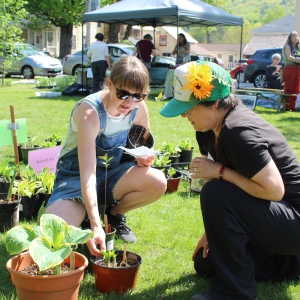 Bridge of Flowers in Shelburne Falls to open on plant sale day, May 11
Bridge of Flowers in Shelburne Falls to open on plant sale day, May 11
 As I See It: Between Israel and Palestine: Which side should we be on, and why?
As I See It: Between Israel and Palestine: Which side should we be on, and why?
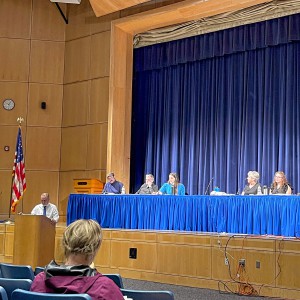 $12.14M school budget draws discussion at Montague Town Meeting
$12.14M school budget draws discussion at Montague Town Meeting
 Greenfield homicide victim to be memorialized in Pittsfield
Greenfield homicide victim to be memorialized in Pittsfield
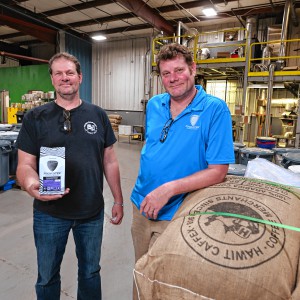 Fogbuster Coffee Works, formerly Pierce Brothers, celebrating 30 years in business
Fogbuster Coffee Works, formerly Pierce Brothers, celebrating 30 years in business
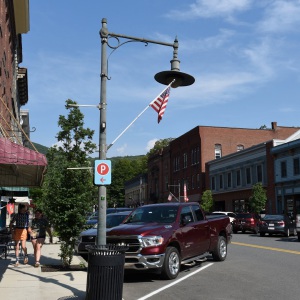 Streetlight decision comes to Shelburne Town Meeting
Streetlight decision comes to Shelburne Town Meeting
Back in August 2022, the group discussed spending some of its $100,000 budget on an initial design for a new seal, but did not proceed. The report calls on Galvin to issue a request for proposals to “design a new seal based on the symbols and terms proposed by the commission.”
The commission instead spent its funds on what Collins termed “a $100,000 research project by UMass, which got a lot of information that we probably already know.”
The UMass public opinion survey, Collins said, found that “peace” was the “No. 1 phrase that the state wants to have” in the state motto. “It’s in there twice” already, he said.
The panel’s report does not feature any concrete proposals for a seal redesign, but includes a brainstormed list of favored concepts that members had batted around in some of their meetings:
■Flora (examples: eastern white pine, elm tree, cranberries);
■Fauna (examples: chickadee, cod, feather, turkey);
■And geographic features (examples: ocean, hills, coastline, state shape).
Suggested motto ideas include: Commonwealth, For the common good, Equality, Hope, Liberty, Peace, Reciprocity and Names of Massachusetts tribal nations.
State Seal Commission member Jim Wallace told State House News Service he was disappointed by his time on the panel.
“I thought it would just be a cool historical thing to take part in, you know? This is history, and if we’re going to come up with a new seal, new flag, something like that, I thought it would be an outstanding process to be involved in. Nope. Not even close,” Wallace said, adding that it was “absolutely the worst commission I’ve ever been a part of.”
The draft of the report notes that the suggestion of depicting the state flower — the mayflower — “connects back to the colonial era and the Pilgrims, whose actions included the forced displacement of Indigenous people.” A suggestion to portray a cranberry on the seal, meanwhile, “conjures mixed feelings among some Indigenous residents due to its relationship to colonialism.”
“So then it’s like, well, how about the cod? ... Nope,” Wallace said. “Cod’s a resource that was stolen from the Indigenous tribes. OK, how about a cranberry? Oh no, those lands were stolen, so we can’t have a cranberry. Well, we’re really getting narrow here. But this is stuff that should have been started almost three years ago, not wait until two, two and a half years, and the deadline’s almost here.”
The report also records conflicting views around continuing to picture an Indigenous person on the state crest. A draft noted that “several” Indigenous members of the commission “expressed support for keeping an Indigenous figure in the heraldic charge as a way to prevent additional erasure of their communities from the official history and iconography of the commonwealth.”
But other members, the report said, “believed that any human figure, regardless of their background, would be inherently exclusive, limiting the representation on the seal to a specific group or gender.”
Commissioners adopted the report on an 8-2 vote, with nine members not participating in the roll call, and Collins and Wallace voting against approval.
Brian Boyles, executive director of Mass Humanities, and Brian Moskwetah Weeden, chair of the Mashpee Wampanoag Tribe, served as co-chairs of the panel, which also included other tribal leaders and representatives from cultural and historical institutions.
Although the 19-member commission is disbanding, its report contemplates “the next group” to take up its work: a proposed “working group” of up to 19 members that includes several of the same appointees currently serving on the commission. The new working group would report to Galvin’s office.
State Administration Committee Co-Chair Rep. Antonio Cabral, whose legislative committee will have a say over any proposal to move forward with the plan, said “the report is well put together” and congratulated members for their “awesome work.”
“I know it’s an issue that can be touchy, can be sensitive, and I think it was handled quite well without really offending anybody,” the New Bedford Democrat said.
Collins said he felt the “important components that were discussed — around modification, around the sword and the coat of arms up atop — [are] reasonable.”
“But the other elements I didn’t feel were. I thought that empowering a [working group] that’s unelected to make the decision outside of the Legislature really bypasses the responsibility we have, and makes it potentially an unending and expensive exercise in cancel culture that I’m not interested in signing onto,” Collins said.

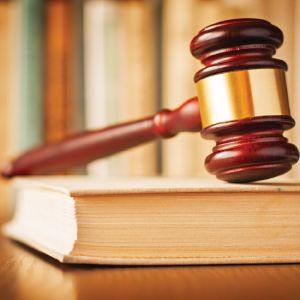 Community Legal Aid expands Disability Benefits Project to Franklin County
Community Legal Aid expands Disability Benefits Project to Franklin County Wear Orange organizers prepare display to remember gun violence victims
Wear Orange organizers prepare display to remember gun violence victims Deerfield candidates, Whately incumbent discuss issues with voters at South County Senior Center
Deerfield candidates, Whately incumbent discuss issues with voters at South County Senior Center
